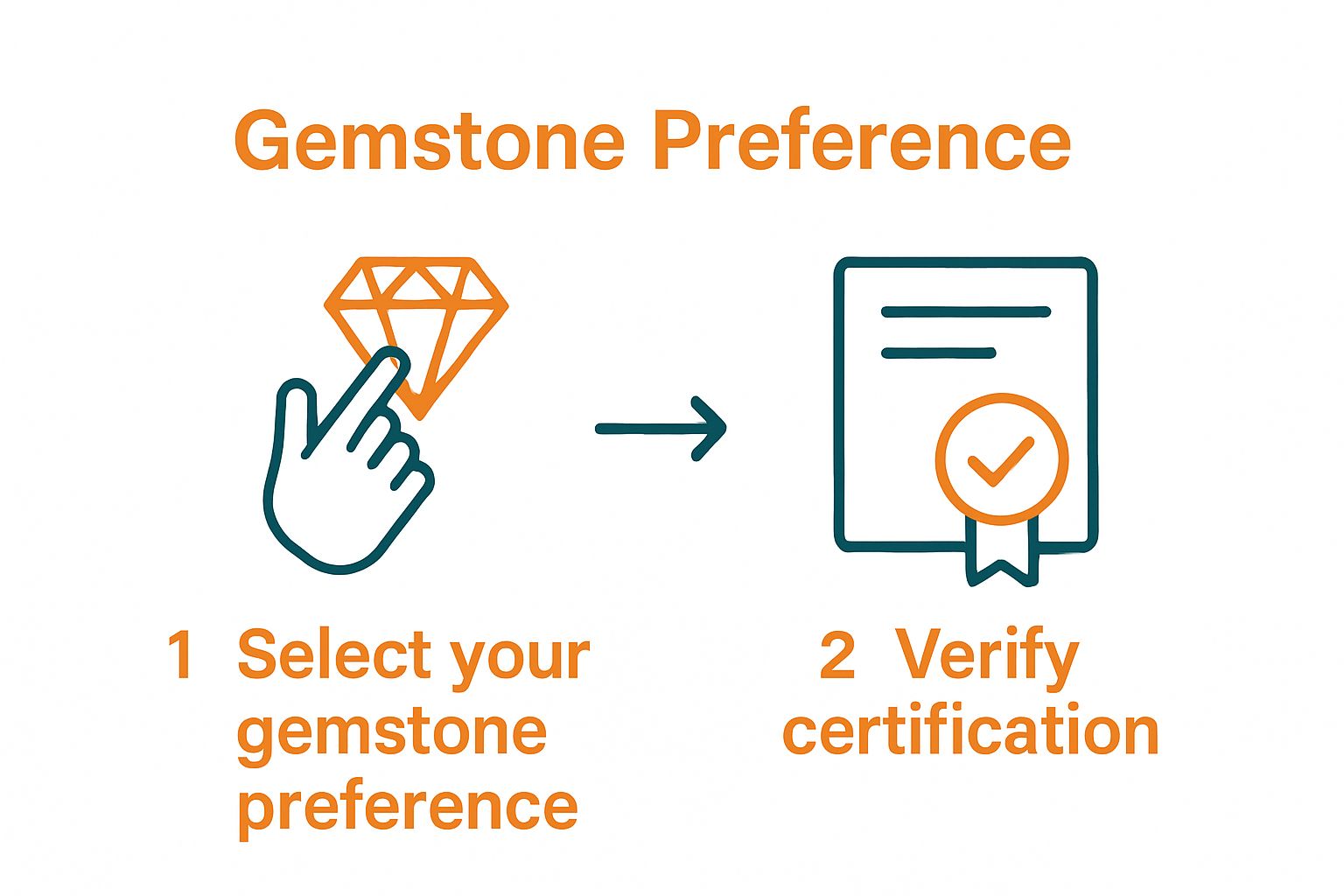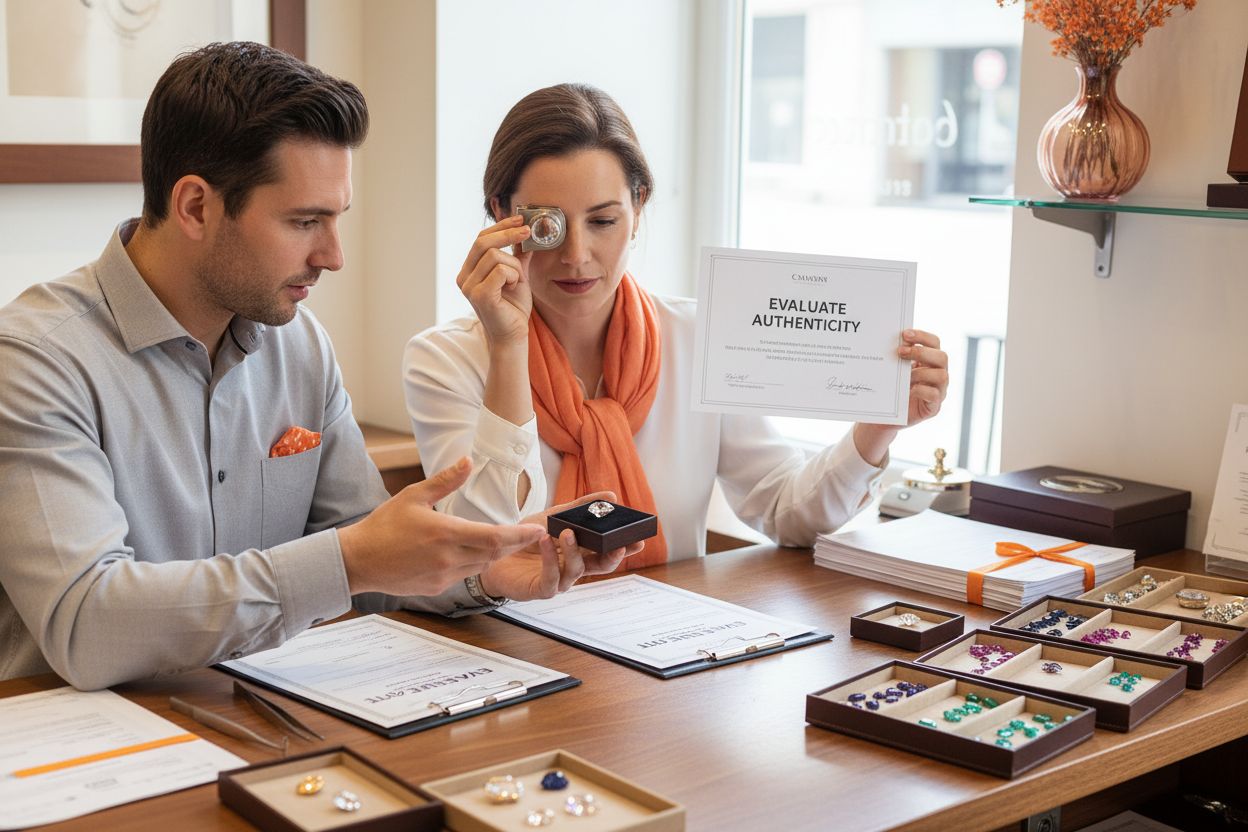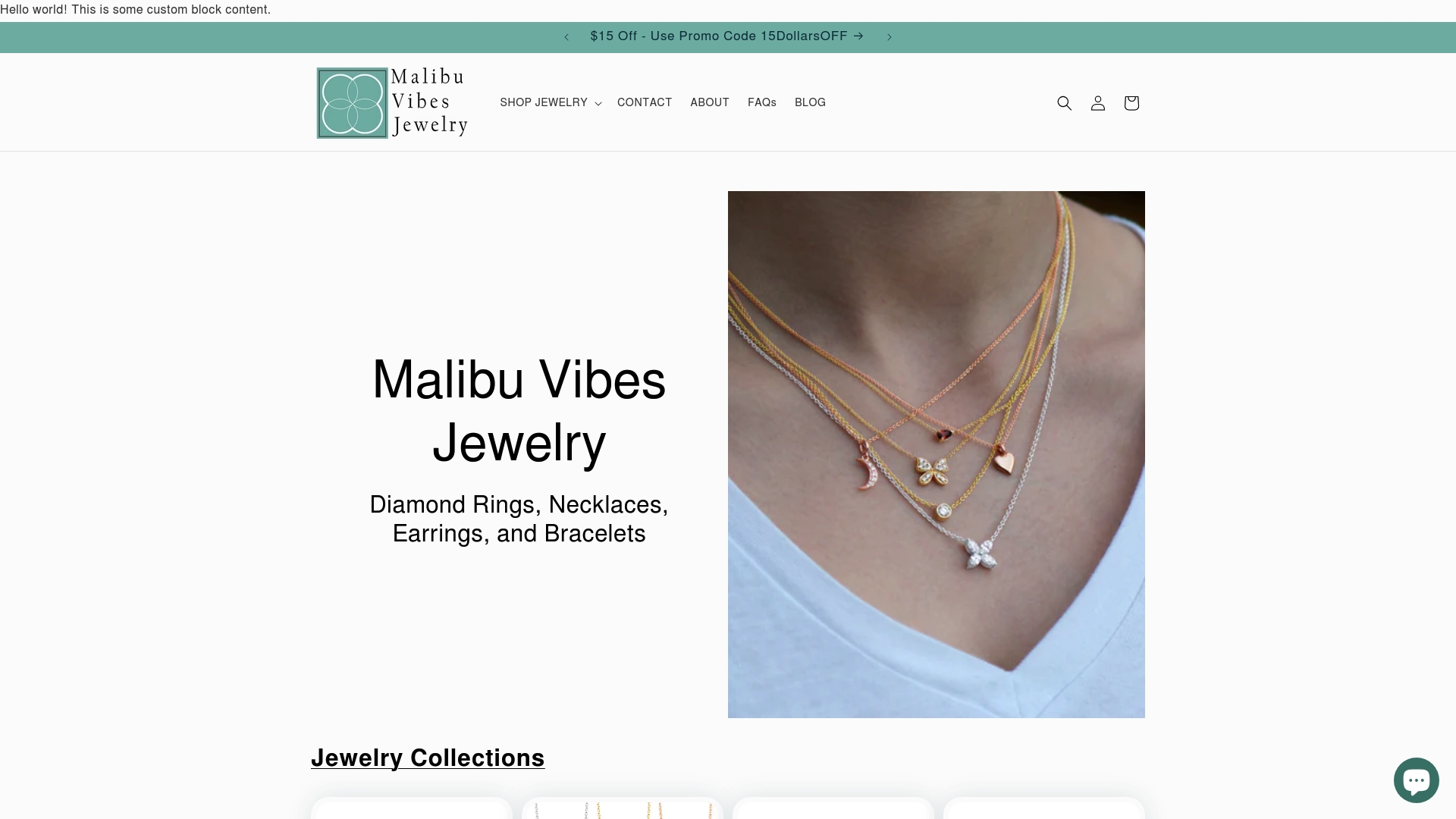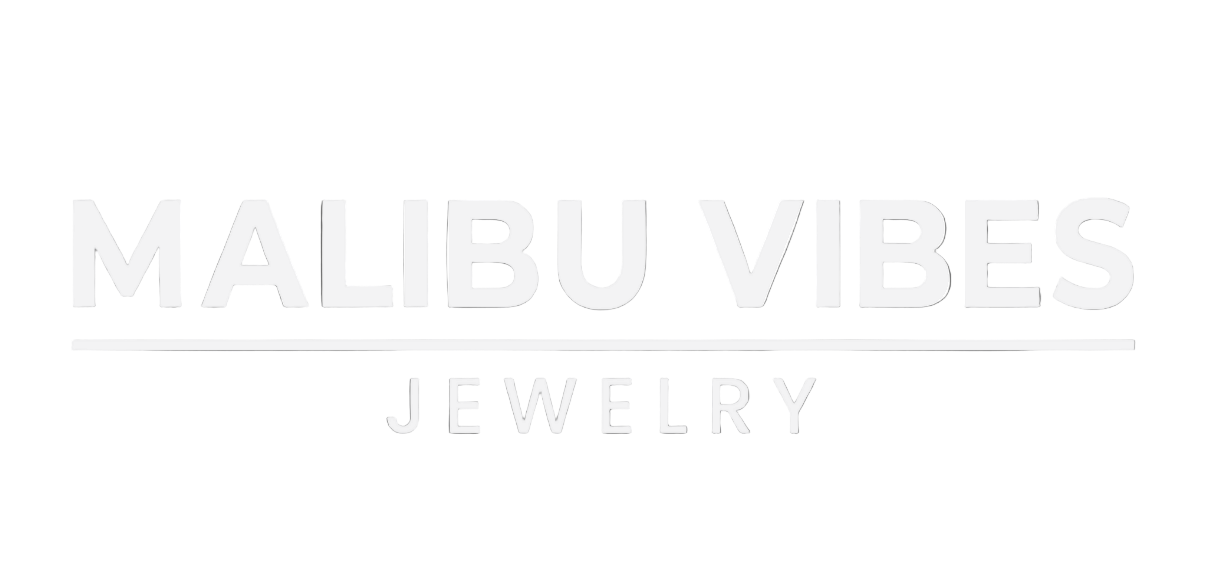Shopping for gemstones is more complicated than picking out something shiny in the jewelry case. There are over 200 different gemstone varieties globally, and each one tells a different story through its color, quality, and origin. Most people think it’s just about picking your favorite color or birthstone. The real secret is that the best gemstone choice is just as much about your lifestyle, emotions, and future investment as it is about beauty.
Table of Contents
- Step 1: Identify Your Gemstone Preferences
- Step 2: Research Gemstone Quality Factors
- Step 3: Compare Gemstone Prices And Sources
- Step 4: Evaluate The Authenticity And Certifications
- Step 5: Make An Informed Purchase Decision
Quick Summary
| Key Point | Explanation |
|---|---|
| 1. Identify your gemstone preferences | Reflect on colors, meanings, and lifestyle to select a gemstone that resonates personally. |
| 2. Understand the 4 Cs of quality | Evaluate gemstones based on color, clarity, cut, and carat weight for informed buying decisions. |
| 3. Research gemstone prices and sources | Establish a budget and compare prices while considering the origin and ethical sourcing of gemstones. |
| 4. Verify authenticity and certifications | Obtain certified documentation from reputable labs to protect against fake stones and ensure quality. |
| 5. Make an informed purchase decision | Assess emotional connections, durability, and negotiate fairly to secure a gemstone that fulfills both aesthetic and practical needs. |
Step 1: Identify your gemstone preferences
Choosing the perfect gemstone is a deeply personal journey that reflects your unique style, personality, and aesthetic preferences. Before diving into the intricate world of fine jewelry, understanding what draws you to a particular stone is crucial. This initial step helps you navigate the vast landscape of gemstone options with confidence and clarity.
Start by exploring your personal color palette and emotional connections. Gemstones are more than just decorative pieces they are expressions of individual taste and sentiment. Consider which colors resonate with you most. Do rich, deep blues like sapphires speak to your soul? Are you captivated by the warm, vibrant tones of citrine or the mysterious allure of emerald green? Your color preferences will significantly influence your gemstone selection.
Beyond color, reflect on the symbolic meanings and personal significance of different stones. Learn about the deeper meanings behind various gemstones to find a stone that truly represents your inner self. Some women are drawn to birthstones that connect them to their birth month, while others seek stones with specific metaphysical properties or cultural significance.
Consider your lifestyle and practical needs when identifying your gemstone preferences. If you lead an active life or work with your hands, you might prioritize harder, more durable stones like diamonds or sapphires. For those who prefer delicate, statement pieces, softer stones like opals or tanzanite might be more appealing. Think about how the gemstone will complement your wardrobe, daily activities, and personal style.
To refine your preferences, create a mood board or collection of images featuring gemstones that catch your eye. Visit local jewelry stores, browse online galleries, and attend jewelry exhibitions to gain hands on experience. Pay attention to how different stones make you feel the emotional connection is just as important as visual appeal. Some women are drawn to stones that remind them of special memories, while others choose gems that represent their aspirations and personal growth.
Remember, there are no strict rules in gemstone selection. Your preferences are valid and unique. Trust your instincts and choose a stone that speaks to you personally, whether it’s because of its color, meaning, or simply the way it makes you feel when you wear it.
Step 2: Research gemstone quality factors
Understanding the intricate details of gemstone quality transforms you from a casual buyer to a knowledgeable jewelry enthusiast. This critical step involves diving deep into the professional evaluation standards that determine a gemstone’s true value and beauty. The four primary quality factors known as the 4 Cs color, clarity, cut, and carat weight will become your essential toolkit for making an informed selection.
Color represents the most fundamental aspect of gemstone evaluation. Each stone has a unique color spectrum that determines its desirability and worth. Professional gemologists assess color based on hue, saturation, and tone. Vibrant, pure colors with consistent saturation typically command higher prices. For instance, a deep blue sapphire with rich, even coloration will be more valuable than a pale or mottled stone. Explore our comprehensive guide on understanding gemstone color variations to develop a more nuanced perspective.
Clarity examines the internal and external characteristics of a gemstone. Every stone contains natural inclusions microscopic features formed during its geological creation. While perfect clarity is rare, different gemstones have varying standards. Diamonds, for example, are scrutinized more rigorously for inclusions compared to emeralds, which typically have more visible internal features. Learning to read clarity grading charts and understanding how inclusions impact a stone’s brilliance will help you make smarter purchasing decisions.
The cut of a gemstone dramatically influences its ability to reflect and refract light, creating that mesmerizing sparkle that catches everyone’s eye. A masterful cut can transform an ordinary stone into an extraordinary piece of jewelry.
Skilled artisans carefully shape each facet to maximize the stone’s natural optical properties. Precision in angles, symmetry, and proportions determines how brilliantly a gemstone will shine when it catches the light.
Carat weight provides the quantitative measure of a gemstone’s size. While larger stones are often more expensive, size isn’t everything. A smaller stone with exceptional color, clarity, and cut can be far more valuable than a larger stone with poor qualities. Professional jewelers recommend focusing on overall quality rather than simply chasing the largest possible stone.
Below is a table comparing key gemstone quality factors, summarizing how each contributes to the value and appeal of a gemstone.
| Quality Factor | What It Means | Key Considerations |
|---|---|---|
| Color | Hue, saturation, and tone | Vibrant, pure colors with even saturation are typically preferred |
| Clarity | Presence of inclusions or blemishes | Fewer inclusions usually mean higher value; varies by gemstone |
| Cut | Shape and arrangement of facets | Quality cut enhances brilliance and light reflection |
| Carat Weight | Measure of gemstone size | Larger stones are often pricier, but quality can outweigh size |
To become a savvy gemstone buyer, develop a systematic approach to evaluation. Visit reputable jewelers, request detailed gemstone certificates, and don’t hesitate to ask questions about a stone’s specific characteristics. Trust your eyes, but verify with expert information. Remember that each gemstone tells a unique story, and understanding its quality factors helps you appreciate the remarkable journey from raw mineral to breathtaking jewelry piece.
Step 3: Compare gemstone prices and sources
Navigating the complex world of gemstone pricing requires strategic research and a discerning eye. This step transforms you from a curious jewelry enthusiast into a savvy buyer who understands the nuanced economics of precious stones. Pricing is never straightforward it’s a delicate interplay of quality, rarity, market demand, and sourcing.
Begin by establishing a realistic budget that balances your financial comfort with your aesthetic desires. Gemstone prices can fluctuate dramatically based on multiple factors, so flexibility is key. A high quality smaller stone might offer more value than a larger, less refined piece. Research current market rates for the specific gemstones you’re interested in, understanding that prices can vary significantly between different types of stones and their origins.
Learn about the essentials of jewelry appraisal to understand how professionals determine a gemstone’s true worth. Different sources can dramatically impact pricing. Stones from certain geographic regions might command premium prices due to their exceptional quality or limited availability. For example, Kashmir sapphires from India are typically more expensive than those from other locations due to their extraordinary blue color and historical significance.
Understand the importance of ethical sourcing in your gemstone selection. Many conscientious buyers now prioritize stones from responsible mining operations that ensure fair labor practices and minimal environmental impact. Some gemstones come with certification that tracks their origin, providing transparency about their journey from mine to market. Look for vendors who can provide detailed documentation about a stone’s provenance and mining conditions.
Comparing prices requires more than just looking at numbers. Visit multiple reputable jewelers both online and in physical stores. Online platforms offer extensive collections and often competitive pricing, but physical stores provide the invaluable opportunity to examine stones in person. Technology can be your ally use price comparison websites, gemstone databases, and specialized jewelry forums to gather comprehensive pricing information.
Develop a comprehensive comparison strategy. Create a spreadsheet tracking stone specifications, prices, and source details. Include columns for carat weight, clarity, cut, color, origin, and pricing. This methodical approach helps you make an informed decision beyond pure emotional attraction. Remember that the cheapest option isn’t always the best value. Consider the long term investment potential, the stone’s durability, and how well it matches your personal style.
Finally, don’t rush your decision. The perfect gemstone is an investment in beauty and personal expression. Take time to research, compare, and most importantly, choose a stone that resonates with your individual taste and budget. Trust your instincts, but back them up with thorough, practical research.
Step 4: Evaluate the authenticity and certifications
Authenticity is the cornerstone of a valuable gemstone purchase, separating genuine treasures from potentially worthless imitations. This crucial step protects your investment and ensures you’re acquiring a legitimate, high quality piece of jewelry. Certification is your strongest defense against fraud and misrepresentation in the complex world of gemstone trading.
Professional gemological certifications provide a comprehensive blueprint of a stone’s characteristics and origin. Reputable laboratories like the Gemological Institute of America (GIA) and the American Gem Society (AGS) offer detailed reports that authenticate a gemstone’s quality and provenance. Understand the nuances of diamond clarity and certification to develop a more sophisticated approach to gemstone evaluation.
When examining authenticity, look for multiple layers of verification. A genuine certification should include detailed information about the stone’s physical properties, including precise measurements, weight, color grading, clarity assessment, and any treatments the stone might have undergone. Beware of sellers who cannot provide comprehensive documentation or who seem hesitant to share detailed certification information.
Develop a keen eye for potential red flags. Synthetic stones and treatments can significantly impact a gemstone’s value, and not all alterations are disclosed openly. Some treatments are standard in the industry, such as heat treatment for sapphires, while others can dramatically reduce a stone’s worth. Ask direct questions about any potential treatments and request full disclosure of the stone’s processing history.

Understand the difference between laboratory certifications and appraisals. A certification provides an objective assessment of a stone’s characteristics, while an appraisal determines its monetary value. Both are crucial but serve different purposes. Certifications come from specialized gemological laboratories, offering scientific analysis of the stone’s intrinsic qualities. Appraisals, typically conducted by professional jewelers, provide a current market valuation.
Take practical steps to verify authenticity. Request to see the original certification document and cross reference its details with the physical stone. Modern certifications often include laser inscriptions or unique identifying markers that match the documentation. Some advanced certification processes even include digital verification methods, allowing you to validate the document’s authenticity online.
Remember that expertise comes with experience. If you’re uncertain about a stone’s authenticity, don’t hesitate to seek a second opinion from an independent gemologist. Many reputable jewelers offer complimentary consultations or can recommend trusted experts who can provide an unbiased evaluation. Trust your instincts but back them up with professional verification. A genuine gemstone isn’t just about its physical beauty it’s about the confidence and assurance that comes from knowing you’ve made an informed, authentic purchase.
To help you verify the authenticity of your gemstone purchase, use the checklist below as a guide to the key documentation and verification steps mentioned in the article.
| Verification Step | What to Look For | Why It Matters |
|---|---|---|
| Certification from reputable lab | GIA, AGS, or other trusted organizations | Confirms authenticity and detailed characteristics |
| Detailed certification document | Includes weight, color, clarity, treatments, measurements | Ensures full disclosure and transparency |
| Original certification (not a copy) | View physical or digital original with identifiers | Helps verify the document matches the gemstone |
| Disclosure of any treatments | Full explanation of enhancements or treatments applied | Impacts value and care requirements |
| Laser inscription or unique marker | Physical markings matching certification | Prevents confusion or fraud |
| Independent gemologist consultation | Second opinion if in doubt | Provides unbiased assurance |

Step 5: Make an informed purchase decision
The final step in choosing your perfect gemstone is about synthesizing all your research, personal preferences, and practical considerations into a confident purchasing decision. This moment represents the culmination of your careful journey through understanding gemstone qualities, evaluating sources, and verifying authenticity. Buying a gemstone is more than a transaction it’s an investment in personal expression.
Reflect comprehensively on how the gemstone will integrate into your existing jewelry collection and personal style. Consider the versatility of the stone and its potential to complement different outfits and occasions. A truly exceptional gemstone should feel like an extension of your personality, not just a decorative accessory. Explore our guide on creating custom jewelry designs to understand how a unique gemstone can be transformed into a personalized statement piece.
Before making your final decision, conduct a thorough sensory and emotional assessment. Hold the stone under different lighting conditions natural light, indoor lighting, and soft ambient light to observe how its color and brilliance change. Pay attention to how the stone makes you feel. Does it spark joy? Does it resonate with your personal aesthetic? These emotional responses are just as important as technical specifications.
Practical considerations should ground your emotional connection. Evaluate the stone’s durability in relation to your lifestyle. If you’re active or work with your hands, you’ll want a harder, more resilient gemstone. Consider the long term maintenance requirements. Some stones require more careful handling and periodic professional cleaning, while others are more robust and low maintenance.
Negotiation is a crucial aspect of the purchasing process. Don’t be afraid to discuss pricing, especially if you’ve done comprehensive market research. Many reputable jewelers are open to reasonable discussions, particularly for significant purchases. However, approach negotiations respectfully, understanding the value of craftsmanship and expertise behind each piece.
Protect your investment by understanding the return policy, warranty, and potential resale value. Request detailed documentation about the stone’s origin, any treatments it has undergone, and specific care instructions. A reputable jeweler will be transparent and willing to provide comprehensive information. Your purchase should come with a sense of confidence and excitement, not uncertainty.
Finally, trust your instincts while remaining grounded in the knowledge you’ve accumulated. The perfect gemstone is a harmonious blend of objective quality and personal connection. It should bring you joy every time you wear it, representing not just a financial investment, but an emotional one. Remember that the most valuable jewelry is that which tells a story your story.
Elevate Your Gemstone Journey With Malibu Vibes Jewelry
Choosing the right gemstone can feel overwhelming. You want a piece that truly reflects your personality and style. The article explains how understanding quality factors and authenticity helps you make a confident choice, but the journey does not stop there. Malibu Vibes Jewelry brings your knowledge to life with a curated collection that puts your preferences first. Discover handcrafted rings made from 14k gold, each set with vibrant, ethically sourced stones that capture both luxury and meaning. See how your favorite color, cut, and clarity blend with authentic fine jewelry.
Explore 14k Color Gemstone Rings

Ready to transform your research into reality? Shop our 14k Gold Color Gemstone Necklace Collection or browse the entire boutique at Malibu Vibes Jewelry. Choose a gemstone that is truly yours. Discover fine jewelry you will treasure today—and for years to come.
Frequently Asked Questions
How do I identify my gemstone preferences?
To identify your gemstone preferences, start by considering the colors that resonate with you and any emotional connections you have to certain stones. Create a mood board with images of gemstones that draw your attention, or visit local jewelry stores to gain hands-on experience.
What factors should I consider when researching gemstone quality?
When researching gemstone quality, focus on the four Cs: color, clarity, cut, and carat weight. Familiarize yourself with how these factors impact a gemstone’s value, and compare the characteristics of different stones to make a more informed decision.
How can I compare gemstone prices effectively?
To effectively compare gemstone prices, establish a budget and research market rates for the specific stones you are interested in. Create a spreadsheet that tracks details like carat weight and values from multiple sources, so you can assess the quality in relation to the price.
What does gemstone certification involve?
Gemstone certification involves obtaining a professional evaluation that verifies a stone’s characteristics, including its quality and origin. Always ask for detailed certification documents and ensure the report is from a reputable gemological laboratory to protect your investment.
How do I make an informed purchase decision for a gemstone?
To make an informed purchase decision, synthesize your research and emotional responses to the gemstone. Evaluate how the stone will fit into your personal style and consider its durability based on your lifestyle before finalizing your choice.
What should I do if I have doubts about a gemstone’s authenticity?
If you have doubts about a gemstone’s authenticity, request to see the original certification and check for any potential red flags, such as unclear documentation. Trust your instincts, and if needed, consult a certified gemologist for a second opinion.
Recommended
- The Meaning of Different Gemstones – A Guide to Choosing Intentional J – Malibu Vibes Jewelry
- What is Fine Jewelry? Understanding Luxury and Craftsmanship – Malibu Vibes Jewelry
- Gold Layering Diamond Necklace – How To Layer It Correctly? – Malibu Vibes Jewelry
- Understanding Jewelry as an Investment: Key Insights – Malibu Vibes Jewelry
- Hammerton Studio Spotlight: The Versatile Gem | Hammerton Studio
- TRENDSETTING GEMS POP WITH COLOR! | Hammerton Studio



